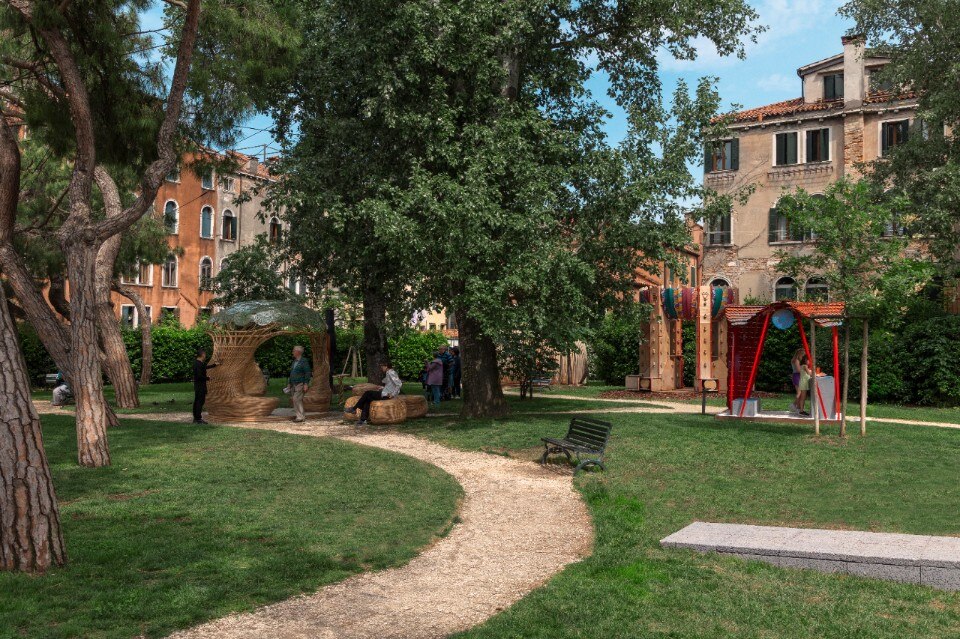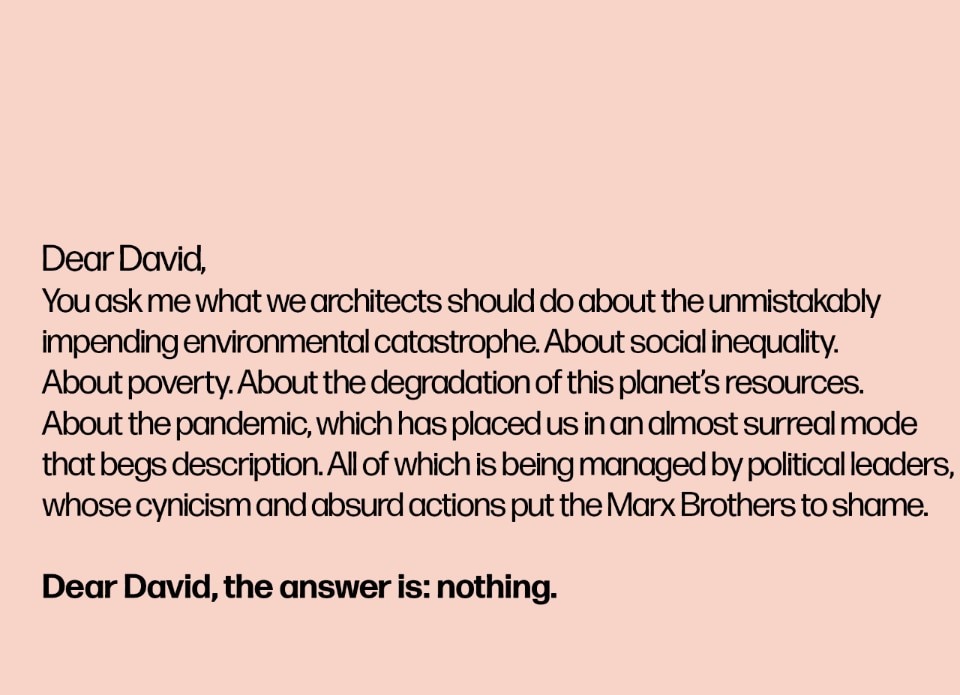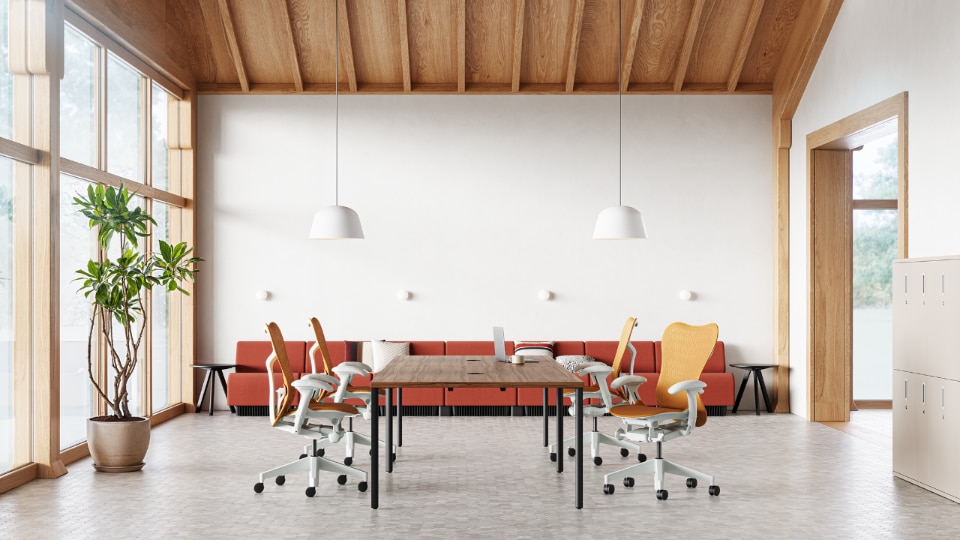Dear David,
You ask me what we architects should do about the unmistakably impending environmental catastrophe. About social inequality. About poverty. About the degradation of this planet’s resources. About the pandemic, which has placed us in an almost surreal mode that begs description. All of which is being managed by political leaders, whose cynicism and absurd actions put the Marx Brothers to shame.
Dear David, the answer is: nothing.
Or do you know of any moment in the history of architecture in which an architect contributed to the decisive issues of society? Architects have always kept company with the world’s mighty. They built palaces, temples, stadiums, entire cities. For the most part in the spirit of the times, and rarely as an expression of renewal and change.
Can architecture actually change anything? Or anticipate anything? For example, in the art world? In my own experience, Tate Modern’s Turbine Hall was an innovation, inviting not only a different audience but also a new kind of art production and presentation that transcends the traditional format of an exhibition space. Artists devised an entire and utterly immersive universe. They were no longer just visionaries; they were able to create whole universes of their own invention. The architecture had given them the platform and the parameters to do so. That may have been audacious because no one knew if it would work or if artists would want to make use of the space. In a way, it was a response to what people were asking at the time – what’s next? – at least with respect to the art world. The Turbine Hall was an answer and offered the potential of a spectacular, unprecedented museum experience.
But it was also an ideal platform for the emergence of a dire development in art: its radical commercialisation. The art scene in London had never experienced anything so intensely international and contemporary. In the wake of Tate Modern, the art market saw an unprecedented boom. A boom that also affected real estate, transforming the London skyline, in just two decades, into a tsunami of random high-rise buildings with no concept whatsoever of urban planning. High-rises are now crowding round Tate Modern as if attempting to peer into the exhibition spaces and take part in their artistic life, although most of the owners don’t even live there and watch from a distance – if at all.
In short, we architects cannot prevent the commercialisation of art and certainly not a real estate boom. That relates to other issues: namely, international monetary policy and investment strategies. Which architect would refrain from building a pretty little tower, thus actively supporting the real estate bubble, boosting his own prominence and generating square kilometres of vacant residential and office space?
We architects need clients. The more famous the architectural office, the more it will attract potential clients and investors. Not only private investors, but governments as well. Especially when it comes to important public buildings, like stadiums. Projects of that kind are often commissioned by governments that do not have the same democratic standards as we do in Europe. Take China. But we still accept projects there because they are so appealing and because we believe that through the way we design, we can make a contribution to a free society. In the case of our Bird’s Nest, we were not simply interested in the Olympics but much more in the everyday life that would follow. The Piranesian lattice that surrounds the seating was conceived as a large public sculpture, designed to attract the people of Beijing – en masse. Like a park, a recreational area where people can gather and do things together. Which actually ties in with social conventions in China. And that’s exactly what has happened with the Bird’s Nest. It’s a popular location that attracts a great many visitors, even without a sports event. The perfect backdrop for a selfie. An icon of China’s ascendancy in the 21st century.
Do you know of any moment in the history of architecture in which an architect contributed to the decisive issues of society? Architects have always kept company with the world’s mighty
But has this new focal point had any effect on the political life of Beijing?
Does the architecture of the stadium also serve as a social sculpture with political impact? That may have been a naive assumption which, incidentally, we shared with Ai Weiwei, who was, of course, more likely to know better. But then: has architecture ever managed to change society?
No. We can’t change society but we can make a tangible contribution. Where and how? Let’s take a look at the major issues today: climate, landscape, migration, healthcare, digitalisation.
For example, landscape. We established the ETH Studio in Basel 20 years ago. It is exclusively dedicated to doing research into the themes of landscape and urbanisation. Initially, only in Switzerland, then later elsewhere: the Nile Valley, the Canary Islands, Hong Kong, Kenya, the Sahara. We who work there – both authors and students – have learnt a great deal. But has it been of any other use? We’ve issued several publications – with limited reach. They will enjoy oblivion in university archives. But there were two books that have had a noticeable and enduring influence on Swiss politics and the guidelines of official spatial planning: Switzerland. An Urban Portrait (2006) and Achtung, die Landschaft (2015). The latter is almost like a manifesto and its core proposal reads: “Build on the built.” This approach is especially urgent in such a densely built country like Switzerland. We live here; it is hard to miss what is happening around us. Being on site, experiencing it, is an important prerequisite for architects when developing an idea for a project. Switzerland is a small country with a limited amount of land, for which reason our study cannot serve as a 1:1 model for Kenya, the United States or Russia, but it can clearly be applied to, say, Hong Kong or Tenerife.
But neither there nor elsewhere is there any idea, any plan and certainly no control over where, what and how one might build on the unoccupied landscape that still remains on this planet. Who owns the land? Who makes the decisions, who gives permission to clear and exploit it? For building permits in the middle of nowhere? The status of the landscape should be equal to that of cities, equally independent and important. We are certainly not “alarmed” that cities are concentrated on only two per cent of the land, according to Countryside, a study by Rem Koolhaas. On the contrary: the landscape has to extend into the city and not conversely!
We can’t change society. But at least single projects, like our study of the Swiss landscape, can succeed in being incorporated into real politics. Which means our work can actually be political but, paradoxically, only if we work and think as architects so that the “utopia” takes physical shape. Becomes tangible.
Who owns the land? Who makes the decisions, who gives permission to clear and exploit it? For building permits in the middle of nowhere?
So we can do something after all! Architects want to do something; they want to take action. Very few of us are intellectuals although many see themselves as such. Even fewer can write, and if they do write and their writing turns into books, they will at best attract attention in architecture magazines and universities. The more versed they are in generating catchy phrases as PR for themselves, the more successful they will be in steering the way we think. PR for the author but what about the substance, the insight? We were so fascinated with Rossi’s L’architettura della città, we thought Venturi’s Complexity and Contradiction in Architecture was the greatest thing, architects after World War II trembled in veneration of LC’s arrogant “trois rappels à Messieurs les architectes”. And what has survived? Nothing! Not a single impetus for today! Only stuff to cram for exams in architectural theory. I take no satisfaction in saying that, only a certain wistfulness, also regarding my own texts, studies and essays. Or letters, like this one written to you, David, that may also reach other architects who ask themselves questions about our business. In other words, another bunch of words with limited reach. Texts survive only if they are independent, if they stand on their own. Only if they create their own self-contained worlds. Only literature can do that, or, still more impressively, poetry. It continues to speak to us long after it has been written. What architects write is not literature; at most, it’s zeitgeist or, more likely, just journalism or anecdote.
Not everyone would agree and there are many who invest great architectural passion in their writing. I recently discussed this with Peter Eisenman. He is among those who put considerable faith in writing. But it is basically wishful thinking to assume that an architect’s words – like those of a prophet – are stronger than mighty walls of stone.
All we have left is the architecture itself. At least that, because it calls for physical action. What an observation to make this year of all years, the year of corona, when we had to stay at home for weeks on end. An indoor drama for a lot of people, like a Beckett piece on the small stage of a provincial theatre. And we realised: it does make a difference when the window is in the right place so that light and sunshine can shine into the cramped space of a flat. And maybe there’s a terrace with an outdoor view. And a tree nearby. Those are not spectacular prospects for us pampered architects, and yet they are such neglected and undeniably crucial concerns.
Sometimes, as an architect, you stumble on something by pure chance; you rarely have the occasion to decide which field you’re going to work in
So we can make a difference by working on projects that are responsive to the needs of users. Making intelligent use of space, actually a traditional task of the architect, is still of fundamental importance.
Not only space, but also the way we shape it and the materials we use. You can’t produce architecture without actual building materials that have to come from somewhere – and are renewable, or not, as the case may be. We can do without concrete, for instance, unless it is meant to play an explicit aesthetic role. Or where it is indispensable as in buildings that are extremely tall or reach deep into the earth.
This would substantially reduce CO2 emissions worldwide and would protect precious, non-renewable resources, like gravel and sand, by leaving them where they are.
In fact, we should radically rethink the use of concrete and not simply because we want to be environmentally correct. Concrete has become commonplace. It’s omnipresent on today’s construction sites because you can do practically everything with it. We architects abuse materials by thoughtlessly exploiting them or only taking an interest in their surface appeal. Which is to our disadvantage since we thereby restrict our own latitude as well. Architecture as an arrangement or production of ideas is not architecture; it’s mere decoration and, as such, not only ugly but also detrimental to the entire world of architecture. Architecture has such immense potential precisely because its sensual, material and spatial diversity is so similar to us human beings, so fragile and vulnerable. We can hear it, it can amplify and dampen sounds. It can store smells in stairwells and living rooms. Architecture has a smell; every room, every flat smells different. Like the people who live there.
Sometimes, as an architect, you stumble on something by pure chance; you rarely have the occasion to decide which field you’re going to work in. When we won the tender to build the REHAB clinic in Basel 20 years ago, we had no idea that our research into the rehabilitation of patients would have such an enduring impact and lead to so many projects in the field of healthcare. We came up with a new hospital typology, largely defined by flat volumes. Like landscapes with numerous courtyards. Each of them different in design, material, detailing, vegetation, lighting. A building with spaces so different and distinct creates an intensity and diversity of perception for patients who have been forced to surrender the mobility they once took for granted. There is practically no other building by H&deM that embodies such a holistic combination of landscape, city and interior. And which provides an experience equally accessible to all those who live and work in those spaces. Patients, doctors, healthcare workers, visitors. This REHAB clinic taught us so much about hospitalisation. Knowledge that we have been able to apply to projects in Denmark, Switzerland, and now in San Francisco as well. Obviously, architects always say that they learn from their projects. But in this case it isn’t simply lip service. Healthcare is a totally neglected field. Architects were rarely allowed to get involved, and if they did, they were unable to turn the hospital into a worthwhile, liveable place. Can you think of any hospital built since 1945 that does so? A place that offers both carers and patients surroundings that can help make moments that are hard to take more bearable? In fact, more often than not, it’s quite the opposite. Even some of the medically best-appointed clinics in the world are often boring boxes, ugly monsters made even uglier by proliferating extensions. And in the current pandemic, those ugly places, the neglect and the global inability of politics, medicine and society to cope have become painfully visible in the news reports on TV. Healthcare and its architecture is going to be a major concern in the years to come – and I think that many architects will discover it is a new field of activity.
So, dear David, that’s enough. I’ve been rambling. If I keep going, my letter will turn into an essay, and you know only too well how we feel about that. There are naturally a lot of other concerns – but more about them maybe another time.
Warmly,
Jacques
Basel, August 2020

Time Space Existence: the Future of Architecture In Venice
Until November 23, 2025, Venice is the global hub for architectural discussion with "Time Space Existence." This biennial exhibition, spearheaded by the European Cultural Centre, features projects from 52 countries, all focused on "Repairing, Regenerating, and Reusing" for a more sustainable future.



